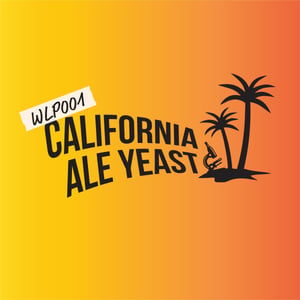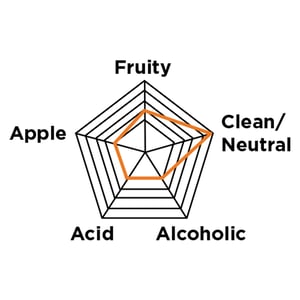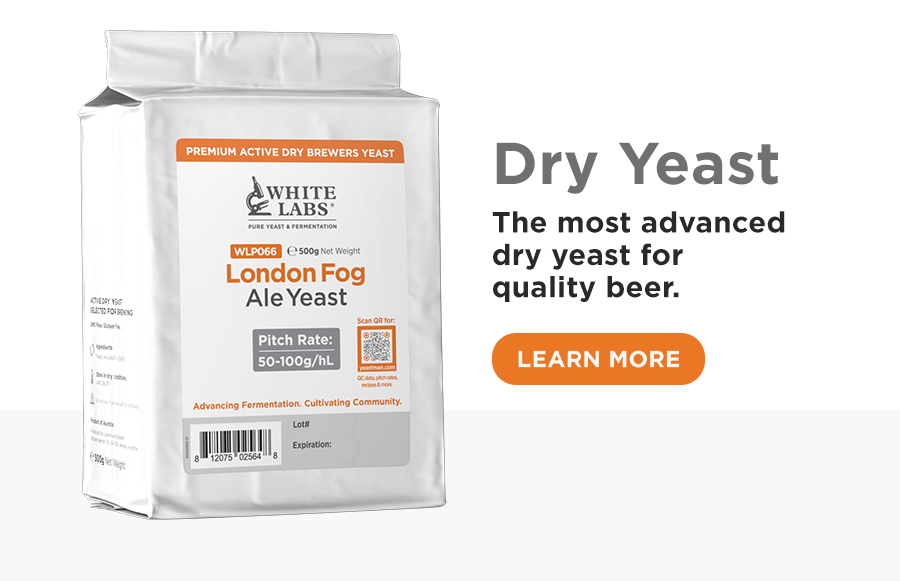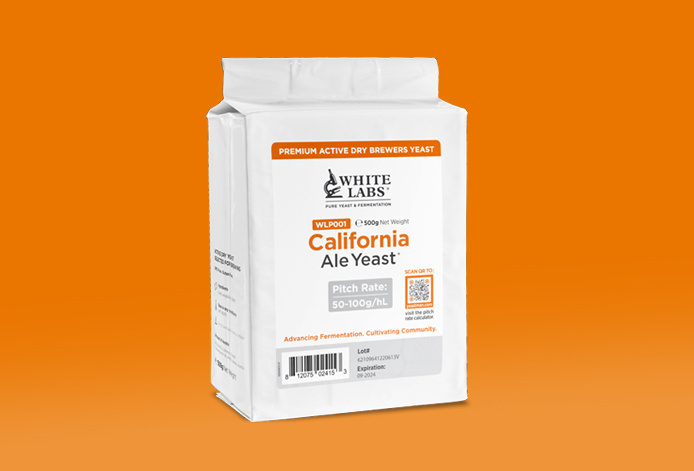Over a decade ago, we sought to produce a active dry White Labs strain to support the growing interest in dry brewing yeasts. During that quest, we found that there wasn’t a good opportunity to make the active dry yeast we wanted to make, one we could 100% stand behind.
After several years of research and trials with dry yeast production and fermentation, we finally entrusted our beloved yeasts to a family-owned and operated, experienced yeast manufacturer, with a passion for the industry, just like us: Lallemand Brewing. In collaboration, we brought the yeast strains and uncompromising quality White Labs is known for in a brand new product. This first strain release brings you an authentic dry version of WLP001 California Ale Yeast®, the most popular brewing strain in the world.
The standardized quality control we perform on our liquid yeast is also the same as what we employ with our dry yeast. The process by which liquid and dry yeast are grown, stored, and used can be different, resulting in some practical differences for brewers and nuances in the flavor and aroma profile of the final product.
Now you may ask, “Are your dry and liquid yeast the same?” Yes, and no. This strain is indeed WLP001 California Ale Yeast® and can be verified by genetic identification.
Providing the most flexible options for brewers has always been important to us, and we’re excited to offer another choice when it comes to yeast.


White Labs wouldn’t be here without our first yeast strain produced in 1995, WLP001 California Ale Yeast®. This strain is a favorite in our collection and is used in some of the best beers around the world.
This yeast strain is famous for its clean flavors and hardy fermentations and is known for its use in hoppy beers. It accentuates hop flavors and aromas and attenuates well, even for high gravity beers. A higher than average attenuation leads to drier beers as well as medium flocculation to leave a clean and crisp beer. WLP001 is also quick at reabsorbing diacetyl.
- Best-selling yeast
- Versatile and Robust - Great for higher gravity ales and beyond beer
- Accentuates hop flavors and aromas in IPAs and hoppy styles
Top Benefits of White Labs Dry Yeast

Easy-to-Use: Our active dry yeasts are convenient and shelf-stable, no special handling required—just pure, high-quality fermentation power in every brick.
Repitchability: One of the only active dry yeasts you can repitch. White Labs Active Dry Yeast can be pitched for 3-10 generations, maintaining consistent fermentation quality with proper care and handling.
High Viability: Over 1 billion live cells per gram, along with extra nutrition and sterols from cell membrane content of non-viable cells.
Complex Flavor: Experience more flavorful fermentations with White Labs Yeast, thanks to its plump, robust cell membranes that enhance yeast vitality and flavor expression.
Cost Savings: Take advantage of the extended shelf life, high cell viability, and flexibility of production schedules—stock up and save with our Mix and Match discount when you purchase a case of 20.
Quality: 24 tests for each lot, including diastaticus, viability, activity, and fermentation performance.

All dry yeast should be stored refrigerated to maintain 36°F to 40°F (2°C-4°C) the appropriate shelf life. Dry yeast can be used up to the expiration date printed on the package.
Once a pack is opened, use the yeast as quickly as possible. An opened pack must be stored refrigerated and used within one week. A re-sealed vacuumed and refrigerated pack can be kept until the end of its shelf life.
DO NOT FREEZE
FREQUENTLY ASKED QUESTIONS
How does White Labs WLP001 California Ale Yeast® compare to other similar strains?Most active dry yeasts are produced in a conventional process with propagation, drying and quality control, including WLP001 California Ale Yeast® and you will get the same quality, viability and performance you would expect from an active dry yeast.
WLP001 California Ale Yeast is genetically distinct from other strains of similar origin, making this the only California Ale Yeast out there.
Our active dry yeast is also tested using proprietary qPCR methods, allowing for higher sensitivity for potential wild yeast contaminants. Using WLP001 California Ale Yeast®, you will get the craft industry’s most popular strain, known for its clean and robust fermentations, along with the confidence of the uncompromising White Labs quality control standards.
What is the cell count?
The viable cell count is generally 5-10 x 109 cells per gram and a minimum of 5 x 109 cells per gram.
What is the viability?
Active Dry yeast viability is generally expressed in the number of viable cells per gram rather than as a percentage, like liquid yeast. White Labs Premium Active Dry Yeast typically contains 60-80% viable yeast with a minimum of 5 x 109 viable cells per gram. The remaining dead yeast provides nutritional value in fermentation, including sterols, nitrogen, and vitamins.
What are the sizes you offer in active dry?
White Labs Dry Yeast are available in Professional (500g) and Homebrew (11g) sizes.
How much yeast do I need?
We recommend 0.5-1g of active dry yeast per Liter of wort up to 18° Plato.
500g → 5-10hL
11g → 20L/5 gallons
To get specific pitch rate recommendations, see our yeastman.com pitching rate calculator and select Dry Yeast.
How should I store it?
While active dry yeast can be stored at room temperature for short periods of time, we recommend storing all active dry yeast refrigerated (36º-40ºF/2º-4ºC) to maintain the appropriate shelf life.
Is it gluten-free?
Yes, the yeast is grown on molasses, so it is gluten-free.
Is it organic?
No, it is not.
Why is the color different from lot to lot?
There are color variations, but they have no impact on the yeast's performance or the beer's flavor. These variances are mainly caused by variations of raw materials (molasses) and, to a lesser extent, pH towards the end of propagation.








